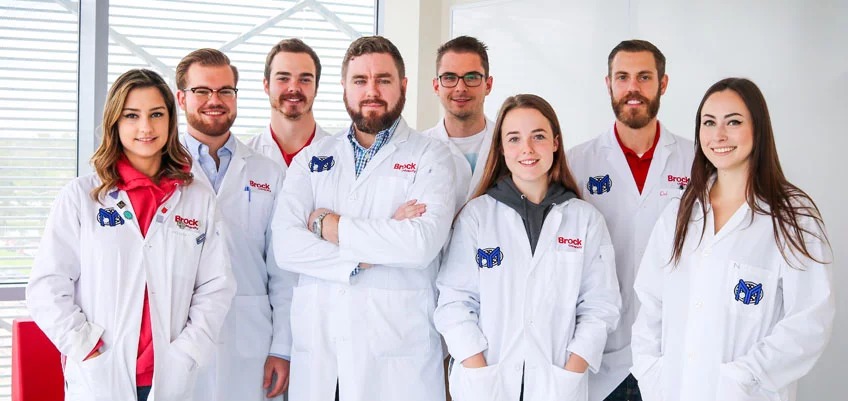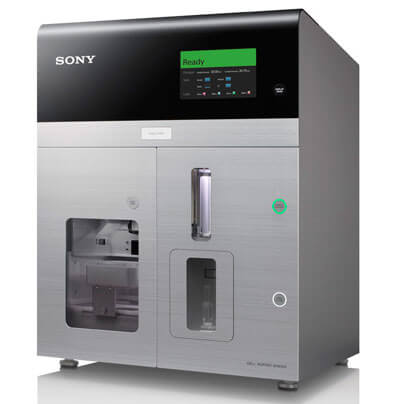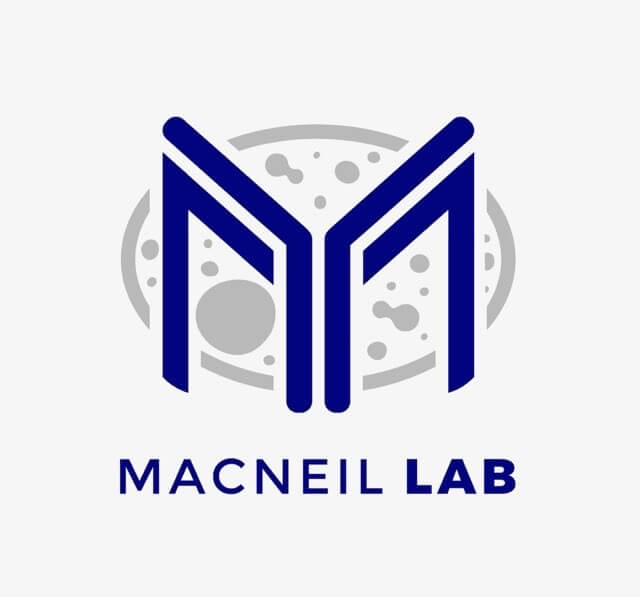-
Sign In
-

-
 Sony Biotechnology
Sony Biotechnology
-

-
 Sony Biotechnology
Sony Biotechnology
-
Allergic Inflammation: Cell Signaling and Epigenetic Mechanisms Underpinning Inflammatory Responses

Meet the inflammation and immunity researcher studying the fundamental cellular mechanisms behind uncontrolled inflammatory responses to allergens.
As the prevalence of allergic disease continues to rise worldwide, immunologist Dr. Adam MacNeil and his team are pushing toward a healthier future. They are identifying novel targets in allergic inflammation to enable the development of innovative therapies. Specifically, the MacNeil Lab investigates mechanisms in hematopoietic stem cells behind the maturation of allergic mediator cells directing allergic inflammation. A key research goal is to identify how an allergen activates a mast cell to create an inflammatory response.
"We're interested in allergic inflammation from two different branches, firstly, how the cells that contribute to inflammation emerge from the bone marrow, and secondly, looking at how mature mast cells contribute to inflammatory mechanisms at the site of exposure," explains MacNeil, associate professor in the interdisciplinary health sciences department at Brock University, Canada.

Dr. Adam J. MacNeil, Associate Professor of Immunology at Brock University's Department of Health Sciences. Pictured from left to right are; Melissa Rouillard, Aindriu Maguire, Rob Crozier, Adam MacNeil, Jeremia Coish, Katie Hunter, Colton Watson, and Natalie Hicks. Image courtesy of the MacNeil Lab. Seeking to understand the signals that stimulate a progenitor cell to become a mast cell in different tissues, this research looks to determine the signaling pathways directing the epigenetic, and ultimately, proteomic profile of these cells.1,2,3 Cells are isolated and matured from bone marrow to create functional, phenotypical mast cells, which are primed with allergen-specific IgE molecules before addition of the allergen to activate the cells. The inflammatory response to the allergen, and the cell signaling processes that contribute to the inflammatory mechanisms, can then be measured through the secretion of histamines in degranulation mechanisms, or release of pro-inflammatory mediators such as cytokines, chemokines, and lipid metabolites.
"The function of the Sony SH800 that is so important to the work we're doing is to be able to have precision sorting and immunophenotyping of heterogeneous populations of cells."
Dr. Adam MacNeil
Brock UniversityBeing able to identify and sort cells with a specific immune profile requires tools capable of precision sorting of heterogeneous populations of cells. MacNeil expands: "We're working with a heterogeneous population of cells in the bone marrow and trying to take only the stem cells out. So, it's a very small population within the total population of cells. Many of the assays that we want to do with that small population of cells are very well suited to being sorted directly onto a 96-well plate where we can then actually conduct the experiment directly, knowing exactly how many cells are in each well and what the particular profile of those cells is. That makes the Sony SH800S a really strong tool for our lab."
Accessible sorting for robust results
When it comes to optimizing and streamlining the lab's work, Sony technology offers advantages over traditional methods. "The traditional flow cytometer or cell sorter in any core lab is operated by a technician, and they're the only one allowed to touch it. That doesn't make for great learning opportunities for graduate students, and it's much better if they can actually interface with the instrument themselves," says MacNeil. "The software and automation really allows for that to happen, but also adds to the robustness of the instrument. The way in which it has been designed means that it's pretty difficult to break it."

For MacNeil, the Sony SH800S Cell Sorter is a great fit for the lab, with a seamless software interface and great overall instrument design and modularity for easy plate-based sorting. With an epigenetic approach to understanding how mast cells differentiate, and the effect of inhibiting specific signaling pathways in those cells, the MacNeil Lab uses sorted cells in functional assays such as immune cell profiling and cytokine secretion. Also, the cells can be sorted into plate- based assays for ChIP or RNA-Seq to assess their genetic profile. "We're not only interested in sorting. We bought the device because it's robustly dynamic," explains MacNeil, referring to the Sony SH800S. "You can look at data acquisition and not have to even use the sorting function at all in certain scenarios. There are many times that we're simply interested in looking at the phenotype of our cells and not worried about sorting necessarily. We've found this instrument to be very easy to use and to give us robust data in terms of the immune profile of our cells."
In addition, the SH800S microfluidic sorting chip helps to automate key stages of instrument setup and demonstrates versatility with a wide range of chip sizes, ranging from 70–130 µm, for sorting a variety of cells. "The chip ultimately gets to the robustness of the instrument," explains MacNeil. "Because of the chip, we have such peace of mind about how the instrument functions that we don't even worry about clogging of the instrument and all of the problems that the chip ultimately solves. If we do run into a problem, we can just change the chip. I certainly find the chip technology to be really well suited to our type of lab environment."
"The overall package of having an instrument that is capable of giving you high-precision sorting in an accessible format was really a marriage of two beautiful things for our lab."
Broader implications

MacNeil Lab logo courtesy of the MacNeil Lab. Working within the diverse multidisciplinary department at Brock University opens unique and fascinating research avenues not available to all immunologists and has led MacNeil to interesting collaborations and knowledge exchange on transdisciplinary projects.
As part of these broader research avenues, working with a sociologist (Wade) and cardiovascular biologist (O'Leary), MacNeil also studies adverse experiences in childhood. The team is investigating whether such events may set the immunological stage for dysregulated inflammation in later life, through mechanisms involving stress-stimulated cortisol release that can shape how the immune system is responding.4
In another stream of collaborative immunological research, MacNeil collaborates with a psychologist (Bogaert) to look at the role of the immune system in shaping sexual orientation as part of the fraternal birth order effect. This research looks at how early pregnancies stimulate the immune system to make antibodies against brain proteins in fetal males that may then affect their social behaviors in later life. "It's something I may not have expected to ever work on," says MacNeil. "But when you come to a diverse department with a wide lens on health, these kinds of opportunities emerge. We're now interested in using the SH800S to test hypotheses for particular mechanisms underlying this phenomenon."5
Future challenges
Looking ahead, MacNeil expects tissue heterogeneity to be a key issue to tackle in the field of immunology. "Cell populations simply aren't uniform," he says. "Mast cells in different locations in the body don't have exactly the same phenotype, and so, as our research proceeds and we continue to probe the role of the mast cell in allergic inflammation, we're very conscious that tissue heterogeneity is going to be a factor." But with such challenges come opportunities. "We're ultimately interested in going into those tissues and trying to pull mast cells out. To do this, we would require an instrument like a cell sorter. Most of the downstream assays from there are certainly functional phenotype investigations for my lab, including degranulation, cytokine secretion, and lipid metabolism, toward one day potentially modulating their phenotype for the hundreds of millions affected by this inappropriate immune response," MacNeil concludes.
Class 1 Laser Product.
For Research Use Only. Not for use in diagnostic or therapeutic procedures.
References
- MacNeil AJ, Junkins RD, Wu Z, Lin TJ. Stem cell factor induces AP-1-dependent mast cell IL-6 production via MAPK kinase 3 activity. J Leukoc Biol. 2014;95:903-915.
- Wu Z, MacNeil AJ, Junkins R, Li B, Berman JN, Lin TJ. Mast cell FcεRI-induced early growth response 2 regulates CC chemokine ligand 1-dependent CD4+ T cell migration. J Leukoc Biol. 2013 May 1;190(9):4500-4507.
- Sukumaran A, Coish JM, Yeung J, et al. Decoding communication patterns of the innate immune system by quantitative proteomics. J Leukoc Biol. 2019;106:1221-1232.
- Wade TJ, O'Leary DD, Dempster KS, et al. Adverse childhood experiences (ACEs) and cardiovascular development from childhood to early adulthood: study protocol of the Niagara Longitudinal Heart Study. BMJ Open. 2019;9(7):e030339.
- Bogaert AF, Skorska MN, Wang C, et al. Male homosexuality and maternal immune responsivity to the Y-linked protein NLGN4Y. Proc Natl Acad Sci USA. 2018;115:302-306.

